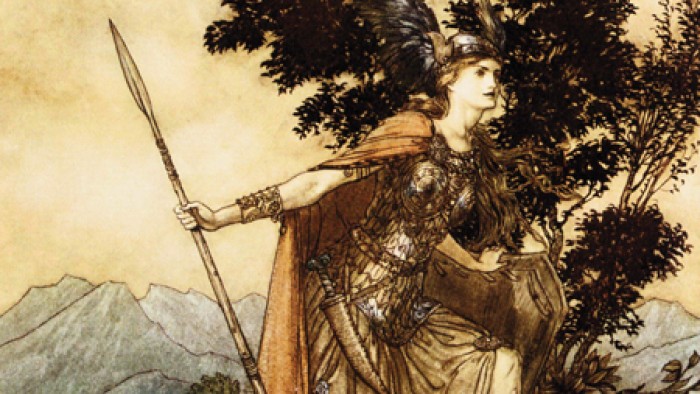 Humanities
Humanities
Warrior Woman

It’s a tale of deceit, deception, mystery—even theft. And it’s nearly as old as time itself.
It’s “Sigurd the Dragonslayer,” a European legend that has been told and retold since the sixth century. (Spoiler alert: Don’t expect to see many dragons slayed.)
What started out as Icelandic folklore was adapted by the Germans. Like a tree that splits into twin branches, the story then diverged substantially in each culture.
But one character is central to each country’s telling of the tale: Brynhilde, warrior queen and fierce rival of Sigurd’s wife. She is, one expert said, “the most complete psychological portrait, male or female, in Icelandic literature.” Basil Price, a medieval studies and digital arts major at the UO, was fascinated by the complexity of Brynhilde. He traced the evolution of her character across the two countries for his final paper in medieval Scandinavian and Germanic literature. Price examined roughly a dozen sources, including classic and contemporary versions of the Sigurd saga in Iceland and Germany. He also pored over scholars’ commentaries and translations of texts about Iceland’s favorite warrior woman (top).

Basil Price
In special collections at Knight Library, Price reviewed a scanned version of “Poetic Edda,” an Icelandic tale dating to the 13th century. Although the poem is written in Old Norse, Price had learned enough of the Germanic language in reading groups to interpret the material.
To track points where Brynhilde’s character diverged in the literature, Price developed a “textual genealogy”— a family tree of notecards to keep the changes straight. At times, his dorm room was virtually wallpapered with notes from articles and books.
In the Icelandic tales, Price found Brynhilde portrayed as a fearless fighter with magical powers—think Sigourney Weaver in Aliens meets Professor Minerva McGonagall from Harry Potter. But she loses her luster in German retellings, becoming little more than a prize for Sigurd to acquire.
His examination of literature dating back centuries gave Price fresh appreciation for the value of the written word.
“I always thought that medieval studies was about cultural history, material culture,” Price said. “In actuality, I think I’ve learned far more about the Middle Ages by reading their stories.”
—Jim Murez


 Twitter
Twitter Facebook
Facebook Forward
Forward